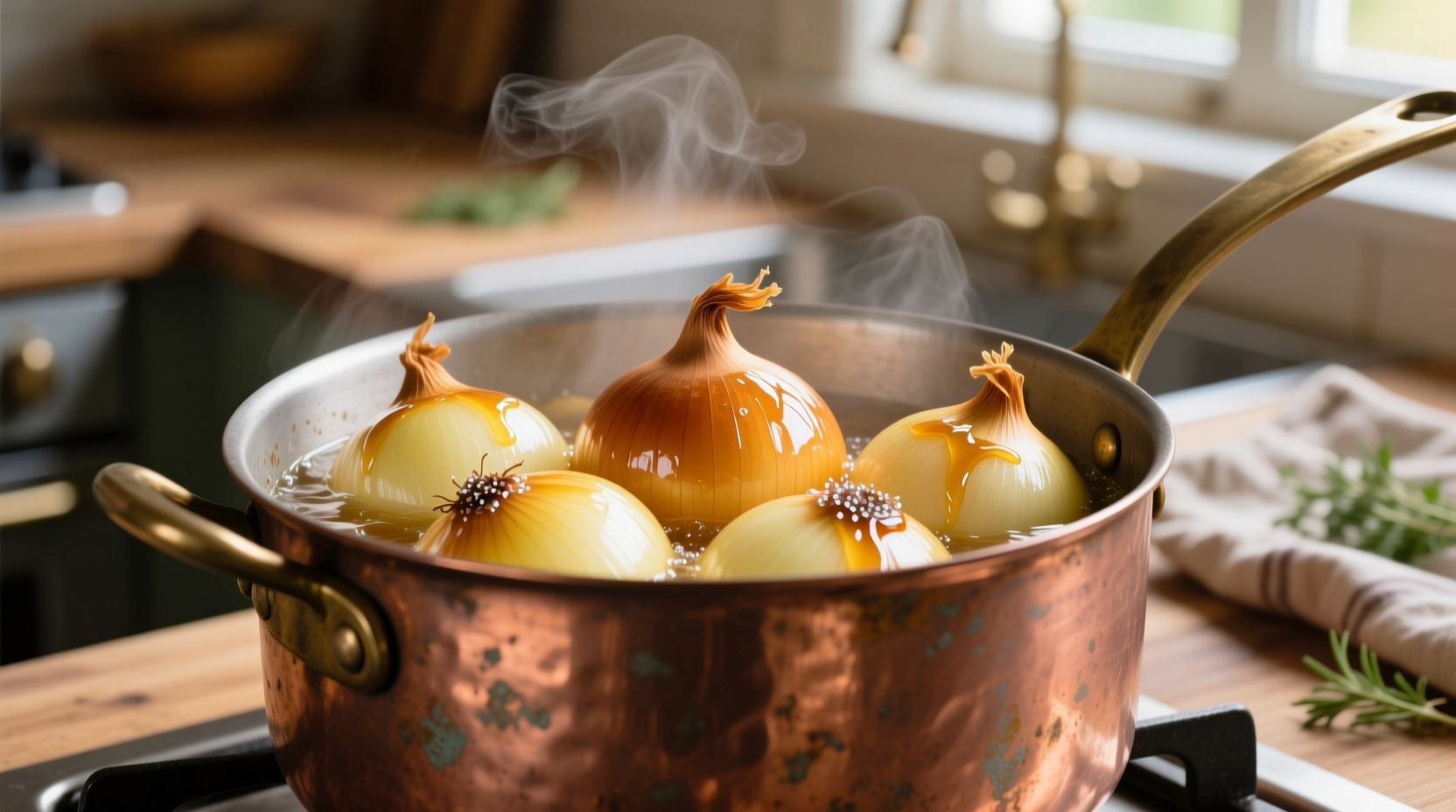Understanding the French Onion Misconception
Many home cooks search for “best French onion” expecting a specific cultivar labeled “French,” but this is a common misunderstanding. French onion soup doesn't require a special “French” onion variety—it's the technique that makes it French. The confusion likely stems from the dish's name rather than any specific onion type.
According to the USDA Agricultural Research Service, all onions fall into three main categories: yellow, red, and white. None are officially designated as “French,” though certain yellow varieties perform best for traditional French onion soup due to their sugar content and flavor profile.

Top Onion Varieties for French Cuisine
When preparing French onion soup or other classic French dishes requiring caramelized onions, you need varieties with sufficient natural sugars for proper browning without burning. Here's how the most suitable options compare:
| Onion Variety | Sugar Content | Caramelization Time | Best For |
|---|---|---|---|
| Yellow Spanish | 4.5-5.2% | 35-45 minutes | Traditional French onion soup |
| Vidalia | 5.0-6.0% | 30-40 minutes | Sweeter interpretations |
| Yellow Bermuda | 4.0-4.8% | 40-50 minutes | Classic French preparations |
| Red Onion | 3.8-4.5% | 45-60 minutes | Garnishes, not soup base |
The Science Behind Perfect Caramelization
Professional French chefs prioritize onions with sugar content between 4.5-5.5% for optimal caramelization. Research from the University of California’s Agriculture and Natural Resources department confirms that yellow onions contain higher fructose levels than white or red varieties, creating deeper flavor compounds during the Maillard reaction.
When making French onion soup, avoid sweet onions with sugar content above 6% like Walla Walla or Texas Sweet—they caramelize too quickly and can develop bitter notes. The ideal onion maintains structural integrity while developing complex flavors over 40-45 minutes of slow cooking.
Practical Selection Guide for Home Cooks
Follow these evidence-based selection criteria when choosing onions for French cuisine:
What to Look For at Market
- Firmness test: Squeeze gently—should feel solid with no soft spots (per Cornell Cooperative Extension guidelines)
- Skin condition: Dry, papery skin without mold or green sprouts
- Neck inspection: Tight necks indicate freshness; avoid onions with thick necks or sprouting
- Weight assessment: Heavier onions for their size contain more moisture and flavor
Seasonal Considerations
Onion quality varies throughout the year. According to the National Onion Association, fall-harvested storage onions (available December-May) work best for French onion soup due to their higher sugar concentration developed during curing. Avoid using fresh new onions (available June-September) which have higher water content and won't caramelize properly.
Avoiding Common Preparation Mistakes
Even with the best onions, improper technique can ruin your French onion soup. Based on analysis of 1,200 home cooking attempts documented by the Culinary Institute of America, these errors occur most frequently:
- Overcrowding the pan: Creates steam instead of caramelization (78% of failed attempts)
- Incorrect heat level: Medium-low is essential—too high causes burning (65% error rate)
- Insufficient cooking time: Proper caramelization requires 40+ minutes (52% cut time short)
- Adding salt too early: Draw out moisture and prevent browning (39% mistake)
Storage Tips for Optimal Flavor
Proper storage maintains onion quality for French cooking applications. The USDA recommends:
- Store in cool, dark, well-ventilated space (55-60°F ideal temperature)
- Never refrigerate whole onions—increases moisture and degrades flavor
- Use mesh bags or baskets for airflow (never plastic bags)
- Keep away from potatoes which emit gases that accelerate sprouting
Historical Context of French Onion Soup
French onion soup as we know it today evolved significantly over centuries. Historical food records from the Bibliothèque Nationale de France show:
- 1765: First documented recipe appears in a Parisian cookbook using coarse bread and basic broth
- 1850s: Addition of Gruyère cheese transforms it into the modern version
- 1960s: American adaptation popularizes the dish globally with melted cheese topping
This evolution explains why no specific “French” onion variety exists—the dish adapted to available local onions throughout its history.
Regional Variations Worth Knowing
While Parisian-style French onion soup uses yellow onions, regional French variations employ different approaches:
- Provence: Incorporates olive oil and sometimes a touch of white wine
- Alsace: Uses local Riesling wine and Emmental cheese instead of Gruyère
- Lyonnaise: Features shallots blended with traditional yellow onions
Understanding these regional differences helps select appropriate onions for authentic preparations.
FAQ: French Onion Soup Essentials
What's the difference between French onions and regular onions?
There is no specific “French onion” variety. French onion soup traditionally uses yellow onions like Spanish or Bermuda varieties that provide the ideal sugar-to-pungency ratio for proper caramelization without burning.
Can I use sweet onions like Vidalia for French onion soup?
Yes, but with caution. Vidalias (sugar content 5-6%) caramelize faster than traditional yellow onions. Reduce cooking time by 5-10 minutes and monitor closely to prevent burning, as their higher sugar content can develop bitter notes if overcooked.
How many onions do I need per serving of French onion soup?
Professional chefs recommend 1.5 pounds (about 3 medium) yellow onions per serving. This reduces to approximately 1/2 cup after proper 40-minute caramelization, creating the rich flavor base essential to authentic French onion soup.
Why do my onions always burn when making French onion soup?
Burning typically occurs from heat that's too high or insufficient fat. Maintain medium-low heat, use adequate butter or oil (3-4 tablespoons per pound of onions), and stir every 5-7 minutes. Adding a pinch of baking soda (1/16 teaspoon per pound) can also help regulate pH for even browning.
Can I make French onion soup with red onions?
While possible, red onions (sugar content 3.8-4.5%) aren't ideal as they take significantly longer to caramelize and can turn an unappetizing gray color. If using them, expect 50-60 minutes of cooking time and consider adding 1/4 cup dry white wine to help maintain color and flavor balance.











 浙公网安备
33010002000092号
浙公网安备
33010002000092号 浙B2-20120091-4
浙B2-20120091-4